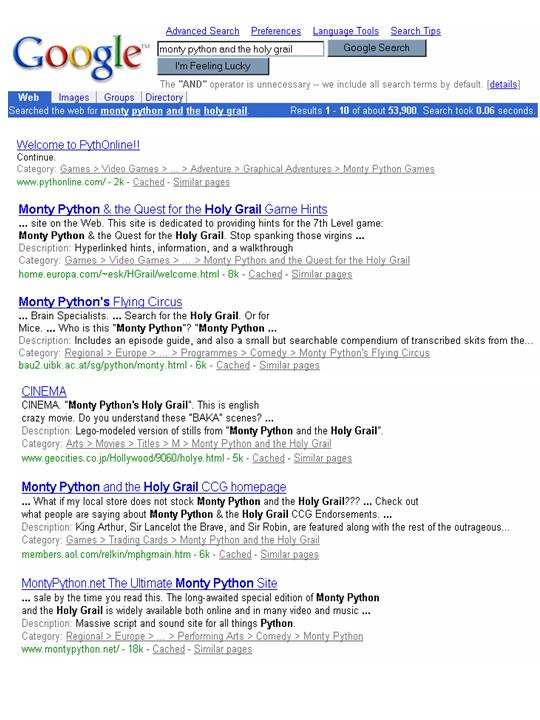Last month I attended the ASIS&T 2008 annual meeting. I have attended all of the IA Summits (also by ASIS&T) but this was my first "annual meeting." I typed up some notes during the conference, but wanted to wait to compose my thoughts and reflect a little longer. Here ya go.
Highlights for me:
- I liked spending time with colleagues that I have not seen in years. Like: Gary Marchionini and Cathy Marshall, to name just a few. I caught up on their research, they caught up on the challenges for my job.
- I got some IBM work done, meeting David Millen and connecting some of his research to ibm.com initiatives. It still pays to find IBMers by going to (outside) conferences.
- Both plenary sessions helped me think outside my ibm.com box and see how the rest of the world is using the Internet these days. For example, the Digital Youth Project report has now been officially released. Check it out.
- Strengthened/made local connections, such as old colleagues at IAKM and LexisNexis, new ones at OCLC and Wayne State.
So, net, it was worth attending, for sure. Any time I can drive a few hours and hang out with fellow user experience professionals who have traveled here from around the world, I will be there. I do all I can to support UX-related gatherings in the midwest.
What I found really interesting about the event (neither good nor bad, just different), were the elements that made it a meeting first and a conference second. When I compare it with other professional association annual gatherings that I have been to (like the CHI conference by SIGCHI and UPA's conference), then I notice some things that stand out here:
- Business and committee meetings, special interest group planning and other things to "do the business of ASIS&T". These things happen at "conferences" too but they were more prominent here.
- The "intellectually stimulating" content (the conference part) is driven by the ASIS&T org chart. Special interest groups, in this case, sponsor the panels, seminars, etc. In other association events, I think the sessions are more driven by individuals, not "each SIG organizes their own track".
- Lots of fellowship, awards and recognitions. Since this was my first ASIS&T meeting, it sort of felt like my first big reunion with my wife's extended family. I only knew a subset of people, I did not get all of the inside jokes or the personalities, but everyone was very welcoming and wanted me to come back for next year's get-together.
I can see how this type of annual event builds up loyalty. Come to one meeting and you could get "hooked", volunteering for all sorts of worthwhile ASIS&T activities for the next 12 months. You will almost have to attend the following year.
The meeting-focus does provide some challenges for the "technical program" side of the event, however. There is a lot of competition for compelling conference content, and when people ask me "where can I go to really stretch my brain for a week?" then it will be hard to recommend this conference over the many other choices. Making the conference sessions better would also help draw in some "outsiders" (non members), which would hopefully lead to some getting "hooked", and so on.
Which leads me to my only real complaint about the conference. To be blunt: There were too many academics on stage talking for too long. There were not enough researchers from companies on the panels. There were not enough practitioners giving their views. Most sessions did not leave enough time for audience questions and conversations.
I really do not hate academics - I love them, actually. I knew this would meeting would be research and academic focused, I was looking forward to that aspect. I had some great conversations with professors and students (at the SIGUSE symposium, in the hallways, at lunch and at the poster sessions.) But it was too unbalanced for me. If you know me, you know I do not bitch that often, and I only do it because I care and I want to make things better. So let me offer these suggestions for future technical sessions at the annual meeting:
- Each research-oriented panel must have at least 1 member who does not work at a university. A researcher from IBM, Microsoft, some other organization, who talks about the topic from their company's point of view.
- Each panel must have at least 1 practitioner to act as a sounding board. "I hear what you are saying and here is how I deal with it in my world" sort of thing. Get more practitioners up on stage.
- Encourage people to follow "best practices" for presenting. Like: more pictures and less text on slides. Take "clarification" questions during their talk and leave lots of time for discussion after. Provide an overview (only) up front and leave the details for Q&A (so if no one cares about your details, we do not have to hear them).
- When a student is presenting their research, do not allow their advisor on stage. The advisor can only help answer questions after the student has done their best. I do not mind going to a session where students are presenting their work, but I want the students thinking on their feet and answering questions, I do not want their professors explaining things for them.
The research/practitioner divide was exacerbated for me because of the gap between the SIG Information Architecture community and the ASIS&T membership as a whole. That fracture runs deep and goes beyond the ASIS&T annual meeting, so I do not want to get into it here. Those things will get addressed.

Recent comments